10 Most Dangerous Places for Shark Attacks
July 14, 2008
If you’ve seen the 1975 film “Jaws,” then you might think that a little New England town called Amity Island is the most dangerous place for shark attacks. The idyllic and quaint resort town became a place of horror, as screaming filled the air and blood turned the ocean red. It seemed like it would never be safe to go back into the water. Even the boat of movie stars that saved the day in the first film couldn’t stop the sharks from returning in the sequels.
 This tiger shark may be too close for comfort for beachgoers.
This tiger shark may be too close for comfort for beachgoers.
While Amity Island isn’t a real place, the events of the movie and book were likely based on some real-life attacks that occurred in 1916. In just 12 days, a shark killed four people and mauled seven others along the coast of New Jersey.
People were in a panic; just a year earlier, the New York Times had said that sharks didn’t seem to be dangerous in U.S. waters [source: Miller]. In the absence of Roy Schneider and Richard Dreyfuss, U.S. President Woodrow Wilson had to handle the crisis. Wilson held special meetings with his Cabinet and dispatched the U.S. Navy and the U.S. Coast Guard to get rid of these menaces of the sea.
Bill Curtsinger/National Geographic/
Getty Images
The common theme in both of these stories is the element of the unexpected and the unknown. Part of why shark attacks scare us so badly is that one minute you’re minding your own business, swimming along, and the next minute, you’ve lost a leg. But we know a lot more today about where sharks live than we did in 1916, so we can give you an idea of where you might want to be a little more careful about sharks.
Statistics in This Article-The statistics in this article come from the International Shark Attack File (ISAF), which maintains data on all known shark attacks. The ISAF is administered by the American Elasmobranch Society and the Florida Museum of Natural History and has data on shark attacks going all the way back to the mid-1500s.
So before you load up the car for a beach trip, take a look at this list of places that rank high for shark attacks. That’s not to say you shouldn’t go. After all, shark attacks are rare, with only 71 attacks and one fatality occurring in 2007 [source: ISAF]. You should probably worry more about rip tides, jellyfish and car accidents than unexpectedly meeting one of these fearsome fish. But it’s definitely worth reviewing the tips to avoid a shark attack before swimming at any of these 10 spots.
Place 10: Shark Attacks in Papua New Guinea
Papua New Guinea is the eastern half of the island of New Guinea, the world’s largest tropical island [source: FAO]. Located in the Pacific Ocean, Papua New Guinea has logged 49 shark attacks and 25 fatalities since 1925 [source: ISAF]. These numbers just edge out New Zealand, which has seen 47 attacks and 9 fatalities since 1852 [source: ISAF]. However, New Zealand has 9,404 miles (15,134 kilometers) of shoreline, while Papua New Guinea has but 3,201 miles (5,152 kilometers) of coast.
The waters of Papua New Guinea contain a wide array of marine environments, so divers from all over the world come to the island to see the immense variety of aquatic life, with shark dives one of the popular options. It’s not clear if Papua New Guinea’s shark attacks stem from divers and other tourists, or if the attacks stem from the local habit of fishing for sharks. Fisheries in Papua New Guinea exported $1.2 million in shark fin products in 1999 [source: FAO].
 Oliver Strewe/Stone/Getty Images
Oliver Strewe/Stone/Getty Images
Fishing in Papua New Guinea
More traditional means of fishing still exist here as well, and reflect the fact that sharks have always been a part of the natives’ lives. Some residents of Papua New Guinea, particularly in the province of New Ireland, still practice an ancient art called shark calling.
Shark callers claim to commune with shark spirits, drawing them near through ritual songs and prayers. When the shark comes to the boat, the caller places a noose on it, clubs it and takes it home for the villagers to eat [source: Jensen].
Place 9: Shark Attacks in South Carolina
Since 1837, 61 shark attacks and two fatalities have occurred in South Carolina [source: ISAF]. Though they occur all along the state’s coastline, the majority have occurred in Horry County, home to popular Myrtle Beach. As this list will reveal, more people in the water generally increases the chance of a shark attack.

Aladdin Color Inc/Hulton Archive/Getty Images
They’re all smiles at South Carolina’s Myrtle Beach, until the sharks show up.
Almost 40 species of shark are indigenous to South Carolina’s waters [source: South Carolina Department of Natural Resources]. The species are generally mild, including the sandbar and bonnethead sharks, but more aggressive species, including the tiger and the bull shark have been spotted. South Carolina’s offshore estuaries provide good birthing and feeding grounds for these sharks [source: Viegas].
Several factors keep South Carolina from being as dangerous a place as, say, Florida. At North Myrtle Beach, the continental shelf, where sharks find many fish to feast on, is located 50 miles (80.5 kilometers) out from the coastline. In Florida, that shelf can come within a mile of the shore [source: Hulen]. We’ll have much more on Florida later, but as another comparison, the waves are generally milder at beaches such as Myrtle, so fish aren’t being thrown inshore with sharks in hot pursuit.
It should be noted that escaping to the other Carolina won’t eliminate the threat of sharks. North Carolina is no slouch in the shark attack department either, with 32 attacks and 3 fatalities [source: ISAF].
Place 8: Shark Attacks in California
When Dave Martin was mauled to death by a shark in San Diego in 2008, it surprised some shark researchers. Since 1926, San Diego has only had 10 attacks and one fatality [source: ISAF]. Shark attacks in California are much more likely to occur farther north, in the infamous Red Triangle.
About 90 miles (145 kilometers) of Northern California coastline between Point Reyes and Monterey Bay form one side of the Red Triangle; from those two points, lines extend to meet just past the Farallon Islands, to the west of San Francisco. These waters are home to lots of seals, which in turn attract lots of great white sharks.

Drew Kelly/Stone+/Getty Images
A surfer at Stinson Beach
But within the Red Triangle are many beaches that are attract surfers, including Bolinas Beach and Stinson Beach. One tour guide operator deemed Stinson “the granddaddy of all shark beaches” [source: Regenold]. While the Red Triangle is known for the great whites, the rest of the state’s coastline also holds the possibility of attack. Since 1926, 96 attacks and 7 fatalities have occurred in this state [source: ISAF].
The Red Triangle’s seals do the work of attracting sharks, but on the next page, we’ll visit a spot where man did all the heavy lifting of bringing the sharks inshore.
Place 7: Shark Attacks in Brazil
When you look at the whole continent of South America, 101 attacks and 23 fatalities have occurred since 1931 [source: ISAF]. But look closer, and you’ll see that 89 of those attacks and 21 of those fatalities have occurred just in Brazil [source: ISAF]. What’s bringing all these sharks to Brazil? A tiny beach town named Recife, which has had some unfortunate luck in attracting sharks to its coastline.

Andy Caulfield/The Image Bank/Getty Images
Beachgoers in Recife
The trouble started in the 1980s, when Porto Suape was constructed to the south of Recife. The construction sealed off two freshwater estuaries, which had served as the birthing waters for many bull sharks. When the estuaries were closed, the sharks went to the next estuary, which happens to discharge right into Recife’s waters. A nearby channel used by surfers became these sharks’ new feeding grounds. The sharks may have been driven even closer to Recife’s shore by a slaughterhouse, which was disposing of blood in nearby tributaries.
Since these events, Recife’s 12.5-mile (20-kilometer) coastline has become an extremely dangerous place, with a higher proportion of attacks resulting in death. One in three shark attacks that occur in Recife are fatal [source: Kingstone].
Place 6: Shark Attacks in Brevard County, Fla.
Of the 71 attacks that occurred in the world in 2007, 32 of them happened in Florida [source: ISAF]. Florida has so many attacks that it warrants two spots on this list, the first being the beaches that make up Brevard County. In the waters off Brevard County, 90 attacks and one fatality have occurred since 1882 [source: ISAF].
 Florida has a lot of shark attacks simply because it has a lot of tourists, and Brevard County is an easy hour-long drive for those already in the area to see Mickey at Disney World in Orlando. The county is home to the famed “Space Coast,” 70 miles (113 kilometers) of coastline named for the space center at Cape Canaveral. In addition to the Canaveral National Seashore, visitors can also enjoy Cocoa Beach and Melbourne Beach.
Florida has a lot of shark attacks simply because it has a lot of tourists, and Brevard County is an easy hour-long drive for those already in the area to see Mickey at Disney World in Orlando. The county is home to the famed “Space Coast,” 70 miles (113 kilometers) of coastline named for the space center at Cape Canaveral. In addition to the Canaveral National Seashore, visitors can also enjoy Cocoa Beach and Melbourne Beach.
Glowimages/Getty Images
Cocoa Beach looks calm now, but watch out for rip currents, lightning and sharks!
While the shark attacks are nothing to sneeze at, Brevard County is dangerous for a few other reasons as well. In 2008, Forbes named Brevard County beaches the most dangerous place for rip current drowning. In 2007, 10 people drowned because of the rip currents, a rate that’s higher than any other county in the United States [source: Sherman]. Parts of this coastline also fall into Florida’s “Lightning Alley,” an area that has the most lightning in the United States. So when you’re not worrying about sharks, worry about the forecast.
Place 5: Shark Attacks in Queensland, Australia
In 2006, Sarah Kate Whitley was swimming near Brisbane in water no higher than her waist when she was attacked by three bull sharks, which tore off both of her arms while biting her stomach and legs [source: Cratchley]. Her death is just one of Queensland’s 38 fatalities and 103 attacks since 1700 [source: ISAF].

Zac Macaulay/Photographer’s Choice/Getty Images
The bull shark is one of the three most dangerous sharks.
Australia is home to 166 shark species [source: Modofsky]. You could run into one of them anywhere on the seaboard, but the eastern coast of this country is particularly prone to attacks because it’s so densely populated.
Australia’s eastern coast is made up two large states: Queensland and New South Wales. These two states rival each other for the most dangerous coastline in Australia. If you only count statistics from 1957 to the present, Queensland is more dangerous, with 22 of Australia’s 57 shark attack fatalities [source: Cratchley]. Overall, New South Wales has more attacks, but we’ll get to them later on this list.
Some of Queensland’s beaches are protected by drumlines, or baited hooks meant to catch sharks, as well as some protective netting. Nets are designed to catch sharks more than 6.6 feet (2 meters) in length, so that the more dangerous sharks aren’t coming in close to shore [source: Queensland Government]. The government must constantly defend the practice to environmentalists, however. In 2005, in response to outcry about a baby humpback whale killed in the nets, the Queensland government released figures relating to the nets’ success. In one year, 630 sharks were caught; 298 of those were greater than 6.6 feet (2 meters), including a 17-foot (5.2-meter) tiger shark [source: Murtagh and Mancuso].
Place 4: Shark Attacks in Hawaii
What’s a trip to Hawaii without a stop in Oahu or Maui? Almost half of Hawaii’s 113 shark attacks since 1882 have occurred off the coasts of these two islands, with 36 attacks and three fatalities occurring in Maui and 34 attacks and six fatalities in Oahu. Other islands aren’t safe either, with 19 attacks occurring off Kauai and 12 off the big island of Hawaii [source: ISAF].

Scoopt/Getty Images
Warning signs in Maui
This total is fairly low when you consider the millions of tourists who visit each year, but you should still be on the lookout for the approximately 40 species of shark that call Hawaii home [source: Lursson]. One of these species is the dangerous tiger shark, responsible for the most attacks on humans after the great white.
Hawaii has a mixed record when it comes to dealing with sharks. On the one hand, a 1959 fatal attack led to a decades-long shark eradication program sponsored by the government [source: Gaffney]. On the other hand, some native Hawaiians call the tiger shark aumakua, or guardian spirit.
Place 3: Shark Attacks in New South Wales, Australia
Like its neighbor to the north, Queensland, New South Wales along Australia’s eastern coast is home to some beautiful beaches, which in turn are home to quite a lot of sharks. New South Wales has seen 140 attacks and 61 fatalities since 1700, according to the International Shark Attack File.

Walter Bibikow/The Image Bank/Getty Images
Bondi Beach in New South Wales
Some recent attacks as of press time also helped this sunny locale rank so high on our list. In 2008, a 16-year-old surfer was mauled to death by a bull shark while bodyboarding, just a few months after an incident in which divers were held hostage at a shipwreck by a circling shark, and another instance where a woman was knocked off her surfski by a white pointer shark. Prior to the 16-year-old’s fatal attack, it had been 15 years since a shark-related death occurred in New South Wales [source: Cratchley].
Still, Queensland’s numbers have likely been kept low by protective measures taken at beaches near Sydney. In 1937, nets and mesh were installed in the waters, and the program was expanded in the early 1960s after a spate of fatal attacks [sources: AMBS, Mancuso]. As of 2006, 84 beaches were protected by these nets or by drumlines, baited hooks intended to attract the sharks [source: Todd]. These measures have caused a dramatic dip in the number of attacks and also in the number of sharks.
However, these nets are controversial among conservationists, as we mentioned in the Queensland entry. These conservationists argue that the nets trap and kill endangered species, while not always stopping sharks. For these reasons, the environmentalists favor building caged enclosures for swimmers.
Place 2: Shark Attacks in South Africa
You might think that 214 shark attacks and 42 fatalities in the past 100 years would keep folks away from the waters of South Africa, but that doesn’t seem to be the case [source: ISAF]. More and more people are flocking to South African waters to dive with sharks.

Anna Zieminski/Stringer/AFP/Getty Images
Cage diving in South Africa
There’s plenty of them to find — South Africa was the first countries to formally protect great white sharks, so their populations have grown [source: Hamilton]. You can see mako, ragged tooth, tiger, hammerhead, bull and blacktip sharks, just to name a few. Near Kosi Bay you’ll find tenacious bull sharks known locally as Zambezi. Dyer Island, near Capetown, has earned the nickname “Shark Alley” for the many species of sharks in the water, particularly a high number of great white sharks. These great whites spend their time stalking Geyser Rock, home to more than 50,000 seals [source: Cahill].
While shark diving may provide thrills galore, the industry is extremely controversial. Some blame shark diving, a somewhat haphazardly regulated industry, for recent shark attacks, because it encourages sharks to come closer to shore than they normally do [source: Hamilton]. Proponents say it’s safe and provides a way to learn more about sharks in their natural environment. One tour guide has claimed that he doesn’t even bother with the cage when diving with sharks [source: Shott].
On the flip side, however, another tour guide was injured because his foot was hanging over the side of the boat as he baited the waters to draw the great whites closer [source: Shott]. Chumming the water, or putting a mix of fish blood and guts into the water, could change a shark’s natural behavior. With each new attack, some worry that the sight of humans may become linked to the promise of food, increasing the danger for unsuspecting divers who have no food to offer.
Place 1: Shark Attacks in Volusia County, Fla.
It may seem strange for the No. 2 dangerous spot to outrank the No. 1 most dangerous spot in number of attacks; South Africa, as we mentioned, boasts 214 attacks and 42 fatalities, while Volusia County, Florida ranks just behind with 210 attacks since 1882, none of them fatal [source: ISAF]. Yet what’s worth remembering here is that South Africa’s attacks occurred over 2,798 miles (4,503 kilometers) of coastline, while these 210 attacks occurred in a single county.

Anthony Ong/Digital Vision/Getty Images
With more people interested in surfing, there are more people in the water.
Indeed, at New Smyrna Beach, located in Volusia, there are more incidents per square mile than on any other beach in the world [source: Luscombe]. If you’ve been swimming at New Smyrna, you’ve probably been within 10 feet (3 meters) of a shark [source: Regenold]. These distinctions have earned New Smyrna Beach the nickname “Shark Attack Capital of the World.”
Are the people swimming at New Smyrna Beach particularly delicious? Are the sharks hungrier here? While the area is home to many baitfish, a common prey for these sharks, the real reason for the high number of attacks is simply the number of people in the water. Swimmers and fishermen flock to these waters, and the beaches in this county are some of the most popular in the state for surfing [sources: Lursson, Canedy].
Being known as the “shark attack capital of the world” doesn’t seem to dissuade surfers and swimmers, though. In fact, the deputy beach chief reported that when he closes the beaches following shark sightings and attacks, he receives angry voice mail messages [source: Canedy]. That may be because attacks in Volusia County are fairly mild and are usually just minor bites. Some shark attack victims even drive themselves to the hospital [sources: Taylor, Eckinger].
article from: http://animals.howstuffworks.com/fish/dangerous-place-shark-attack10.htm
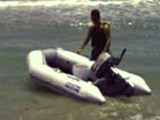
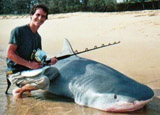
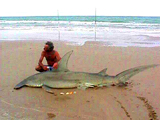
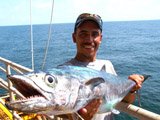
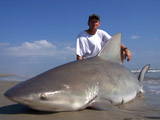
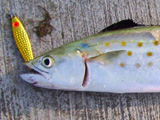
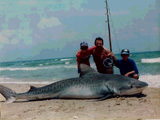

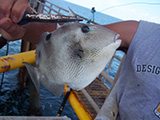
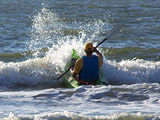
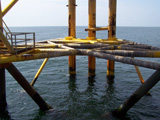
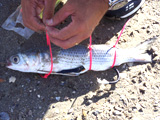
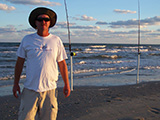
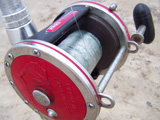
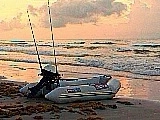
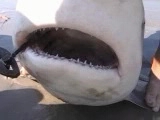
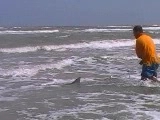
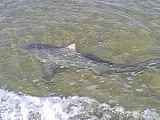
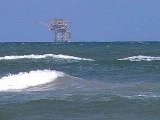
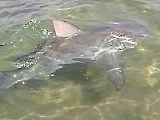
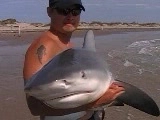
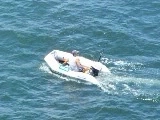
February 8th, 2015 at 12:18 pm
.…
ñïñ çà èíôó….
February 8th, 2015 at 8:57 pm
.…
thank you!!…
February 9th, 2015 at 7:26 am
.…
ñýíêñ çà èíôó….
February 9th, 2015 at 8:03 am
.…
ñïàñèáî çà èíôó!…
February 9th, 2015 at 8:43 am
.…
ñïñ!…
February 9th, 2015 at 2:32 pm
.…
ñýíêñ çà èíôó….
February 9th, 2015 at 6:12 pm
.…
ñïàñèáî….
February 10th, 2015 at 9:32 am
.…
ñïñ!!…
February 10th, 2015 at 10:10 am
.…
ñïñ çà èíôó….
February 10th, 2015 at 10:46 am
.…
tnx….
February 10th, 2015 at 11:12 am
.…
tnx for info!!…
February 10th, 2015 at 3:01 pm
.…
ñïàñèáî!!…
February 10th, 2015 at 3:37 pm
.…
ñïàñèáî!!…
February 10th, 2015 at 4:14 pm
.…
ñïñ….
February 10th, 2015 at 7:08 pm
.…
ñïñ!…
February 10th, 2015 at 7:48 pm
.…
ñýíêñ çà èíôó!!…
February 10th, 2015 at 8:26 pm
.…
ñïñ….
February 10th, 2015 at 11:02 pm
.…
ñïñ….
February 10th, 2015 at 11:39 pm
.…
ñïñ!!…
February 10th, 2015 at 11:52 pm
.…
tnx!…
February 11th, 2015 at 1:56 am
.…
áëàãîäàðåí….
February 11th, 2015 at 2:34 am
.…
thanks!!…
February 11th, 2015 at 11:46 am
.…
ñïñ çà èíôó!…
February 11th, 2015 at 1:31 pm
.…
thanks….
February 11th, 2015 at 3:24 pm
.…
hello!!…
February 12th, 2015 at 3:41 am
.…
good….
February 12th, 2015 at 4:54 am
.…
thank you!…
February 12th, 2015 at 7:08 am
.…
hello!!…
February 12th, 2015 at 11:38 am
.…
tnx!…
February 12th, 2015 at 4:22 pm
.…
ñïàñèáî!…
February 12th, 2015 at 7:56 pm
.…
ñïñ!…
February 13th, 2015 at 1:00 am
.…
ñýíêñ çà èíôó!!…
February 13th, 2015 at 2:48 am
.…
ñïàñèáî çà èíôó….
February 13th, 2015 at 6:20 am
.…
ñýíêñ çà èíôó!!…
February 13th, 2015 at 7:10 am
.…
ñïàñèáî!!…
February 13th, 2015 at 7:44 am
.…
ñýíêñ çà èíôó….
February 13th, 2015 at 10:46 pm
.…
ñýíêñ çà èíôó….
February 14th, 2015 at 1:26 pm
.…
ñïñ….